has anybody used led lighting already?
Experiences? Tips?
Discussion Forum
Discussion Forum
Up Next
Video Shorts
Featured Story
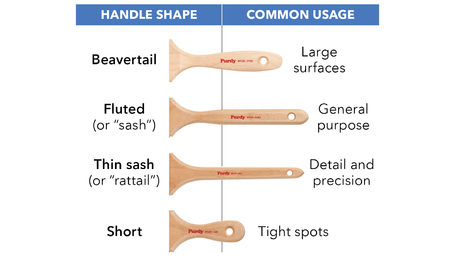
Tips for picking the right paintbrush based on paint type, surface, and personal comfort.
Highlights
"I have learned so much thanks to the searchable articles on the FHB website. I can confidently say that I expect to be a life-long subscriber." - M.K.
Fine Homebuilding Magazine
- Home Group
- Antique Trader
- Arts & Crafts Homes
- Bank Note Reporter
- Cabin Life
- Cuisine at Home
- Fine Gardening
- Fine Woodworking
- Green Building Advisor
- Garden Gate
- Horticulture
- Keep Craft Alive
- Log Home Living
- Military Trader/Vehicles
- Numismatic News
- Numismaster
- Old Cars Weekly
- Old House Journal
- Period Homes
- Popular Woodworking
- Script
- ShopNotes
- Sports Collectors Digest
- Threads
- Timber Home Living
- Traditional Building
- Woodsmith
- World Coin News
- Writer's Digest

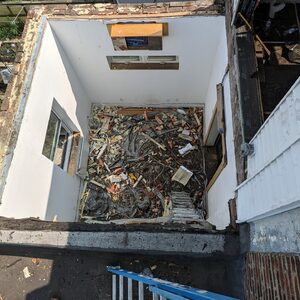
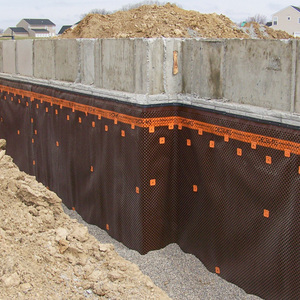
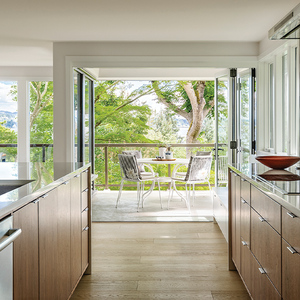
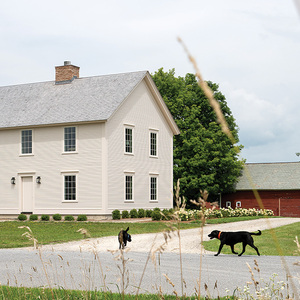













Replies
Good question, I ws just in Europe and they are everywhere.
All I know is they have a more "natural" light, and cost way too much
"I'd rather be a hammer than a nail"
We used it for under-cabinet lighting in our kitchen remodel, specifically American Fluorescent's Diode28 model.
It is expensive, and the amount of light it kicks out is not huge. Due to budget constraints, we bought one fixture for each approx. 3-foot section of cabinetry (one section on either side of the stove). It's not quite adequate, but you can daisy-chain the fixtures, so when our checkbook recovers, we'll add one more to each side. So, that's about $160 to light a 3-foot section of countertop.
On the other hand, they draw only 5 watts per fixture, do not generate any noticeable heat, and will supposedly last for 50,000 hours (but I think that's with a dimmer).
The light is kind of bluish-white. I'm attaching a pic of our kitchen that shows the lights. The ones on top of the cabinets are fluorescent.
I just did some rough calculations comparing LED to fluorescent, halogen and xenon.
Assumptions:
LED
2 fixtures: $160
Bulb life: 25,000 hours
Cost of replacement bulbs to reach 25,000 hours: $0
Total Watts for all fixtures: 10
KWh/year: 7.3
Electricity cost: $27.30
Total cost for 34 years of operation: $187.30
Fluorescent
1 21" fixture: $30
Bulb life: 10,000 hours
Cost of replacement bulbs to reach 25,000 hours: $10.50
Total Watts for all fixtures: 16
KWh/year: 11.68
Electricity cost: $43.68
Total cost for 34 years of operation: $84.18
Halogen
1 fixture (don't know if that's adequate): $30
Bulb life: 2,500 hours
Cost of replacement bulbs to reach 25,000 hours: $36
Total Watts for all fixtures: 35
KWh/year: 25.55
Electricity cost: $95.56
Total cost for 34 years of operation: $161.56
Xenon
2 fixtures: $30
Bulb life: 8,000 hours
Cost of replacement bulbs to reach 25,000 hours: $25.50
Total Watts for all fixtures: 40
KWh/year: 29.2
Electricity cost: $109
Total cost for 34 years of operation: $164.50
So, from a strictly economic sense, for our usage and at our price of electricity, fluorescents are the best choice and LEDs are, by a small margin, the worst choice.
If you envision using them more than 2 hours a day, or if your electricity costs are higher, the LEDs become a better choice, although fluorescents would be hard to beat. Fluorescents make your food look weird, though.
From an environmental perspective, LEDs are the best choice, which is why we bought them:
Nice comparison work dp. The real issue here is the fixture cost. $80 for a fixture is insane. The fixture should be priced at $15, and, it will be in the near future. Putting the fixture at a reasonable cost changes the comparisons and moves the LEDs form last to first by a wide margin.Kinda makes a guy want to get out the ol soldering iron and build his own, but even then you really can't compete with the Chinese.....Nobody gets in to see the wizard...not nobody...not no how!
To be strictly accurate you do need to include the air conditioning costs as well. This can easily double the electrical costs of a device, if you assume 100% AC usage.
If your view never changes you're following the wrong leader
The mercury in flourescents isn't a good thing, but it's really minor. FWIW, the greatest contributor of mecury into the environment is the burning of coal for power. A lot of coal contains some mercury, and we burn quite a lot of coal. So consuming less electricity is a good idea on that front.New Scientist had an article on compact flourescents, comparing the mercury content to other commonly used items. It is really insignificant. One old thermostat has more mercury in it than several complete bulb changes for my house, and I haven't thrown out my old thermostat yet. ;-)
thanks for the update.
It was for costs for the leds that made us go with fluorescent light strip.
In the near future we probably see the cost coming down. Also the choice of fixtures is somewhat limited at present.
The next project will be to replace the 2 150W each halogen lights in the living room and switch to a 8' fluorescent with a glasscovering custom made with colored glass accents. For reading I saw a very attractive (to me) LED floorlamp with a flexible arm.
LEDs are the way of the future. Until then, they cost too much. ;-)
Edited 1/17/2008 12:27 pm ET by Biff_Loman
I was at my sparky shop today and he had 4 bulbs for me that were from a sales show that was at his place. Med base S-71/2 bulbs for 30 a piece is kinda steep.
PARs are 80.00 bucks a copy.
White LEDs are really blue LEDs with phosphor that absorbs the blue light and then radiates white light. Different manufacturers use different phosphors, so the quality of the light version to version can be very different - just like flourescent lights.